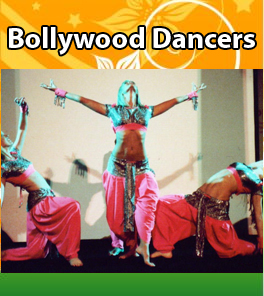By Priyanka Khanna, Indo-Asian News Service New Delhi, (IANS) In the battle for attracting niche audiences, the Hindi film industry has been so busy packaging good proposals that it is forgetting the art of weaving fables that appeal to all kinds of viewers.
New Delhi, (IANS) In the battle for attracting niche audiences, the Hindi film industry has been so busy packaging good proposals that it is forgetting the art of weaving fables that appeal to all kinds of viewers.
With no film emerging out of Mumbai-based studios making it big across India in a long time, Bollywood filmmakers are not only trying to justify their strategy to cater to select sections of audiences but also giving up the dream all together.
In response to a debate thrown up by writer Anupama Chopra’s article in The New York Times titled “Can Bollywood Please All The People, All The Time?”, nearly all the filmmakers felt that making a film that works across India is nearly impossible.
The two major films that released Friday further emphasise the growing gulf.
On the one hand was “Vivah”, celebrating the Indian tradition of arranged marriages that is a family drama tailor-made to appeal to a select kind of audience.
And on the other hand was Sangeeth Sivan’s “Apna Sapna Money Money” with its eyes firmly set on college-going multiplex crowds.
“The universal Bollywood hit is becoming increasingly difficult to pull off. A decade ago, the Hindi film market was largely considered a homogenous monolith. What worked in one town was likely to work in another. But over the years the business has splintered dramatically, forcing industry pundits to create new labels for films,” Chopra says.
Typically, when an actor is approached by a filmmaker the first question asked is whether the offer is for a movie that aims at the sophisticated viewers mostly found in metropolitan areas like Mumbai and overseas or the masses who sit on the cheapest seats.
The explanation given is that since the start of the economic liberalisation in 1991 when India opened its markets, the disparities among the country’s many communities have increased, leading to a fragmentation in the film world.
One India is poised for economic superstardom; the other struggles – with an estimated 300 million people surviving on less than a dollar a day.
The irony, however, is that even as Hindi filmmakers aspire to follow on the footsteps of the more famed Hollywood-based counterparts they are forgetting that a good story told would appeal to everyone.
Hollywood films work pretty much across the globe. The best ones get dubbed or are remade in local languages only because they have the story right.
Hindi filmmakers are flush with funds and may not miss the financial benefits of the demise of the pan-Indian hit in the short run and single-screen theatres will replace Hindi films with Bhojpuri ones or other regional languages but the connoisseurs of good cinema will bemoan the death of the art of storytelling.
In a country where epics written thousands of years ago are still relevant, the decision of not pleasing everyone all the time will be regretted.
To become Hollywood, Bollywood would have to do better than gloat over praises by a British royal prince. Indian cinema must remind itself that no Indian film has picked up awards at international festivals, though this year has been financially the best ever.
A splintered market, with viable sub-segments, new themes, new talent, the irreversible ageing of yesterday’s stars and stories, has wrought a slow change at Bollywood.
Much of these efforts are aimed at de-risking the current business model. Right-sized theatres suddenly struck the apt equation between the demise of the pan-Indian film, a consequently fragmented market with niche stories to tell and screening economics.
With some more cleaning up on other fronts, including production schedules, the producer today sells his film not just to distributors but also broadcasters and the home video segment. The film additionally recovers a portion of its cost through the sale of music rights.
The changes in Bollywood were mainly driven by this sharper edge to marketing.
In a world where one out of six or seven people is an Indian, Bollywood is guaranteed eyeballs. The loyalty to native stories underlines the industry’s export record too. But the slew of remakes only goes to show that Bollywood is yet to invest at the storyboard stage.
Tales from within still cite scriptwriters waiting for weeks to see a director and dialogues being written on the sets. There is a lot of reel yet to run before the world’s biggest film industry becomes a hit.





